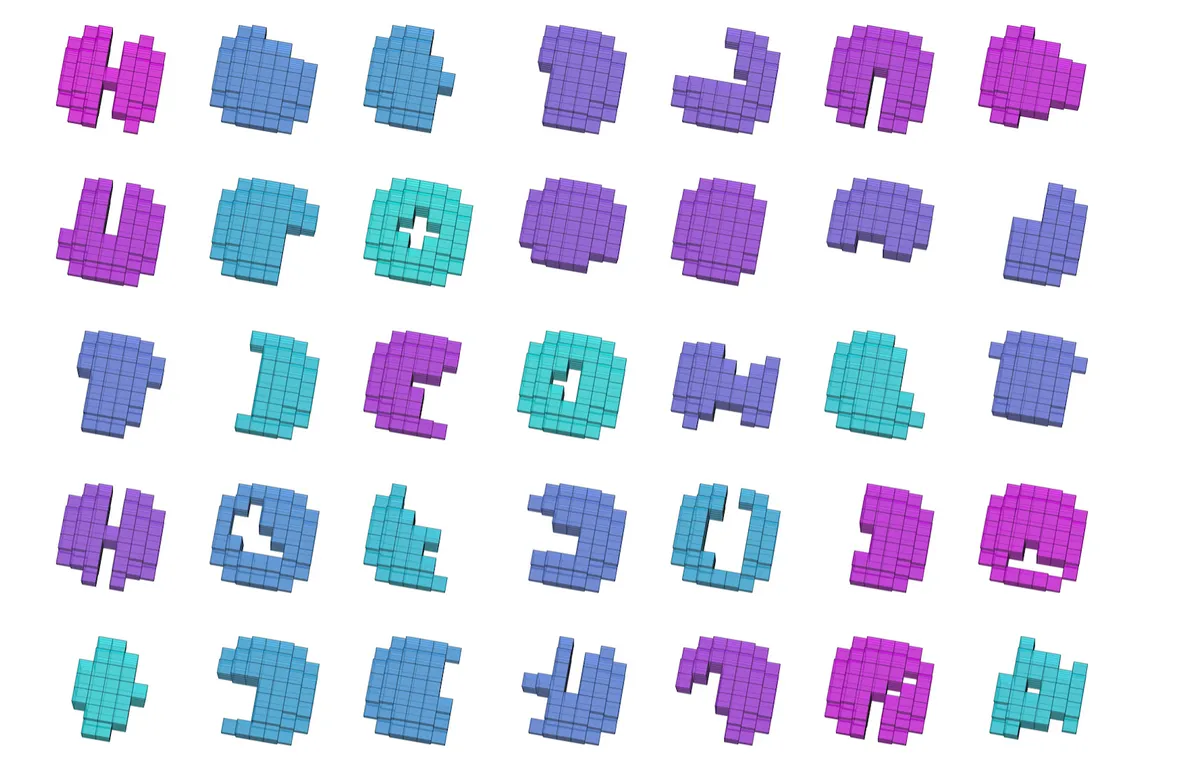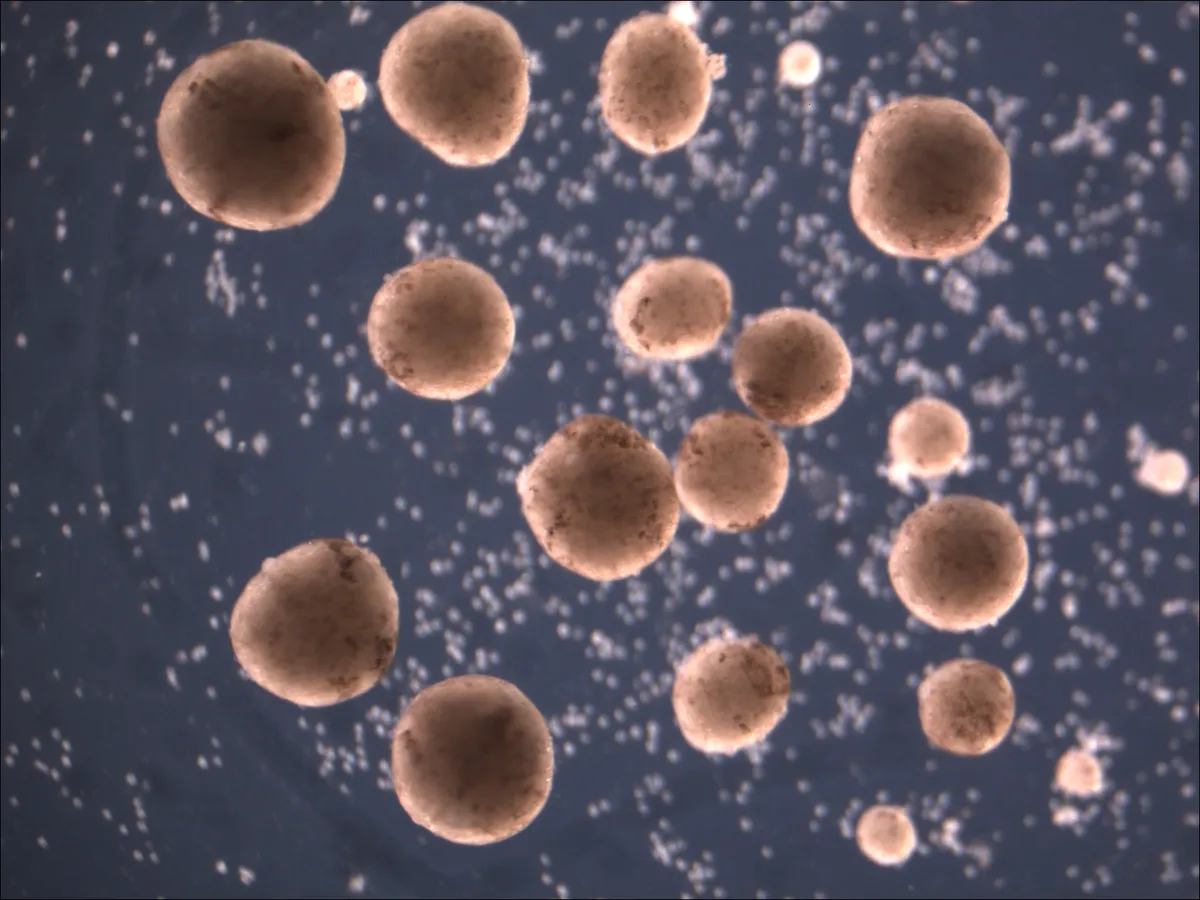A team of researchers in the States has created living robots from frog cells that are able to build replicas of themselves.
We spoke to Sam Kriegman, a roboticist and Postdoctoral Fellow at Harvard University and Tufts University, to find out more.
What’s the starting point in designing something like this?.
This project started out as a collaboration between developmental biologists and roboticists. Our goal was to learn about how animals grow and regenerate by building robots with similar abilities. We made our first robots out of silicone rubber, which can change shape and volume to mimic growth. From there we simply followed the scientific questions we found to be the most interesting. Our curiosity led us to the idea of building robots out of biological cells. Specifically, cells from the African clawed frog, Xenopus laevis – hence their nickname, xenobots.
So, you first designed the shapes of the xenobots using a computer simulation?
That’s correct, I built a simulation that tries to predict how cells will behave when arranged into different structures. If you look inside of the simulation you’ll see a virtual petri dish containing virtual xenobots, each with its own design and unique behaviour. We run an evolutionary process of trial and error inside the simulation to find good xenobot designs.
Often the computer comes up with simple, efficient solutions that humans fail to see. It’s entirely possible that human cognitive limits and biases will prevent us from ever manually designing truly useful xenobots. But, with computer software designing xenobots for us, the sky’s the limit.

Why did you choose to build them using frog heart cells?
We chose frog cells because that’s what we had in the lab. These frogs lay thousands of eggs at a time, almost none of which survive in the wild. The next day, when the eggs are just one day old, we borrow a few to make xenobots. There’s nothing much inside of the egg at this point, it’s just a ball of mush – stem cells yet to take their form. There aren’t any neurons or sense organs present, so we feel that this is an ethically responsible way to get our building materials. We steer the development of these cells into just two kinds of tissue – heart muscle and skin – because that’s enough to create very simple xenobots.
For example, the very first xenobots we made could walk using heart cells, which contract and expand in volume like a piston, pushing the xenobot along the bottom of its dish. Our newest xenobots are made entirely of skin tissue that is covered in patches of small hairs called cilia. These hairs beat back and forth like flexible oars to propel the xenobot forward and let it swim. One of the nice properties of frog cells is that they are self-powered: they come preloaded with energy, similar to the yolk of a chicken egg, which keeps them going for weeks without needing to be recharged or fed.
How do you then produce the xenobots using the cells?
Anyone with a steady hand can build a xenobot by following the instructions detailed in our published studies. All you really need is a microscope, sharp forceps, frog eggs, salt water, and a petri dish. First, we harvest specific cells from one-day-old frog eggs. If we bring enough of these cells into contact with each other they will stick together and compact into a sphere.
We can then carve out the computer-designed body shape by subtraction using sharpened forceps and a microcautery device that slightly burns the tissue so that it holds the desired shape. The resulting xenobot is less than a millimeter across, which is smaller than a grain of sand but visible to the naked eye as a small speck.
Read more:
- Biohybrid design: How to build a biological robot
- Lip-synching robot gets one step closer to crossing the uncanny valley
- Robotic hybrid heart beats like a real organ
What was it like to go from the computer simulations to seeing the living xenobots?
Every child dreams of building something out of Legos or Play-doh that magically becomes a walking, talking creature. So many books and movies explore this idea. The snowman in the movie Frozen, the Gingerbread Man, Pinocchio, Golem, Talos, Galatea. We have this fascination that dates back to ancient literature about bringing inanimate objects to life. Every xenobot starts out as digital computer bits – a virtual creature inside of a video game. If it exhibits interesting behaviours in the video game, we literally bring those computer bits to life. How cool is that?
So then you found that these xenobots could manufacture copies of one another?
I think that is an excellent description of what’s going on. We might say that they’re reproducing, but reproduction in nature implies growth from a seed or an egg or a fragment of the parent. We found that if we sprinkled loose stem cells into the xenobot’s dish, the xenobots would push the stem cells into piles. Piles containing at least 50 cells developed into xenobot children.
When we placed the children into a new dish, they acted just like their parents – they moved around and pushed loose cells into piles that developed into grandchildren. Grandchildren then build great-grandchildren, and so on. I understand that this process might sound like a party trick, but I believe it is an important scientific discovery – it’s a previously unknown form of self-replication in biology that raises all kinds of new questions.

How did you make them replicate in this way?
Well, you can’t plug a USB cable into a xenobot yet. But we can program them in a sense by designing the parents’ body shapes. As you might expect, some shapes are better at building piles than other shapes. Because their ability to replicate is tied to their ability to shovel cells into larger piles, better shovels are better replicators. The best replicator we know of is surprisingly simple – it looks like Pac-Man from the 1980s arcade game – a circular body with a single mouth cut out of its side.
Are there any future applications that you’re thinking of??
Given what we know about xenobots – that they are self-powered, biodegradable, very small, and aquatic – it’s conceivable that they might have future underwater applications, perhaps cleaning up microplastics or other particles from lakes. They could also have medical applications further down the line. Now, you definitely do not want to inject frog cells into your body. But we could, in principle, make xenobots out of human cells instead of frog cells.
If we do that, then maybe someday in the future we will ingest xenobots as vehicles for intelligent drug delivery. Of course creating useful microrobotic medical devices is no easy task. If the robots look in any way like foreign invaders, they will trigger an immune response that tries to eliminate them. Think of an organ transplant that’s going to save a patient’s life, but their body rejects it anyway – this is a major problem in medicine. We can imagine a solution in which bespoke robots are created out of the human patient’s own cells.
That way the body will recognise the robots as part of the team and allow them to do their job. We’re nowhere near this yet, but we’ve only been making xenobots for three years and they can already do some amazing things. Who knows where we’ll be in 10 or 20 years.